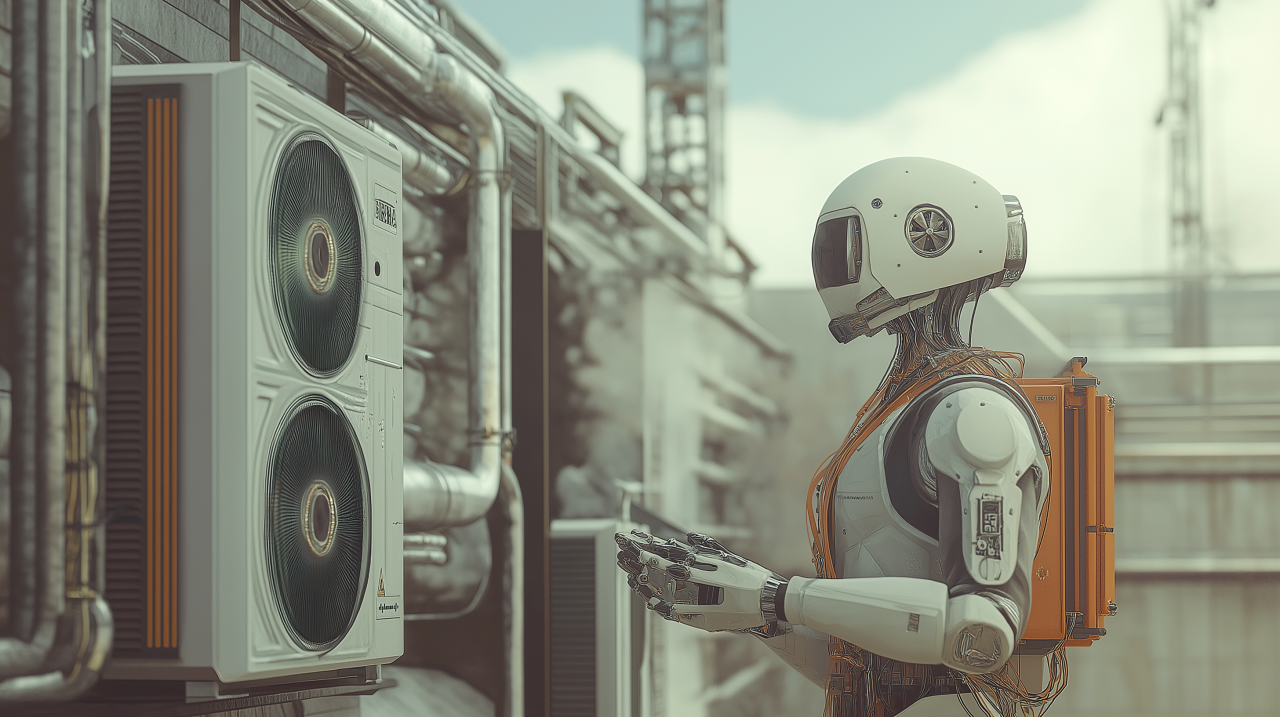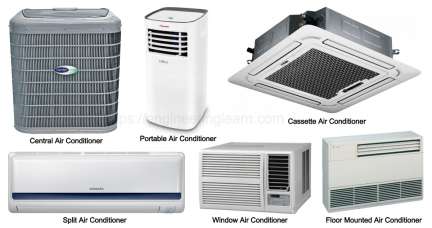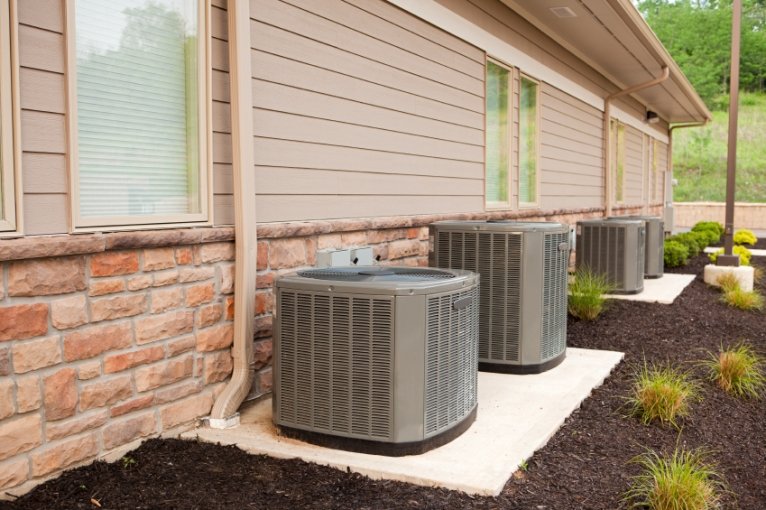In line with the increasing demand for energy efficiency, comfort, and healthier living environments, integrating air conditioners with AI, smart zoning systems, and advanced air quality sensors, there is an exciting new revolution in the world of AC systems. No longer only a luxury but becoming essential for modern HVAC solutions, let us explore in further detail how innovation is transforming air conditioning maintenance and user experience.
AI in Air Conditioning Maintenance: The Future of Cooling
The application of artificial intelligence (AI) in air conditioning maintenance has ushered in a new generation of smart systems that can self-monitor, predict failures, and optimize performance. Here’s how AI is changing the game:
1. Predictive Maintenance and Real-Time Diagnostics
Such algorithms inside an AI-driven air conditioning system continue monitoring the performance of the entire system. In most cases, an AI-driven system collects and analyses data that originates from multiple sensors installed on components like a compressor, coils, and motors.
Predictive Analysis: Through machine learning models, AI predicts the lifetime of critical components and detects anomalies or gradual wear before a failure happens. For instance, if the AI has detected irregularities in the compressor’s efficiency, it may predict a failure in days, thereby triggering preventive maintenance.
Automatic Diagnosis: AI-driven equipment can diagnose faults automatically, checking real-time information against history data. It therefore reduces man-error and helps expedite repairs; minor problems cannot become major overhauls.
2. Optimal Consumption of Energy
AI can adjust system settings based on environmental conditions, user preferences, and usage patterns to optimize energy consumption without compromising on comfort. The system learns from user behavior and the weather forecast to adjust operation, making real-time decisions on when to activate, deactivate, or modify cooling levels.
Dynamic Energy Adjustment: For example, on cooler days, the system may slow down compressors or shut off in areas where the temperature is already in the comfort range.
Energy Savings: AI helps prevent overuse and ensures the system runs at peak efficiency. This reduces waste in energy consumption, making the entire system environmentally friendly.
Smart Zoning Systems: Tailoring Comfort to Individual Needs
Smart zoning systems allow for granular control over the cooling process so that air conditioning is delivered only where and when it is needed. This level of customization enhances both comfort and energy efficiency.
1. Zone-Based Temperature Control
Traditional air conditioning units cool the entire house or building as an entity, at times wasting energy on unoccupied spaces. Smart zoning splits your home or business into designated temperature zones, making it possible for the system to cool only the rooms that are being used.
Automatic Adjustments: Sensors at each zone monitor temperature, humidity, and occupancy. The system will automatically cut back on cooling or heating if a room is not in use.
Personalized Comfort: Each zone is individually controllable to make sure rooms or areas receive the ideal temperature according to what suits users best; either a cooler living room or a warmer bedroom for better sleep.
2. Dynamic Response to Occupancy and Time of Day
Advanced zoning systems take it up a notch further by learning the habits of occupants. These systems eventually learn patterns using machine learning about when rooms tend to be used, the preference of temperature levels among family members, or other times of the day.
Example: The system can start cooling a room only when a person enters or during specific times of the day when people are usually at home, thus minimizing the need for continuous operation.
Automatic Scheduling: The system can also be integrated with smart home devices, such as voice assistants or mobile apps, to automatically set settings according to schedules or external conditions like outdoor temperatures.
3. Reduced Wear and Tear
Smart zoning systems not only save more energy by reducing the unnecessary operation in unoccupied spaces but also reduce wearing and tearing of the AC unit itself. The system runs less frequently and more specifically, so it probably makes the equipment last longer.
Air Quality Sensors: Healthier, Cleaner Air
The most important innovation in air conditioning is the inclusion of air quality sensors. These sensors do much more than control temperature; they are crucial for ensuring optimal indoor air quality.
1. All-Inclusive Pollutant Detection
Air quality sensors can detect a variety of indoor pollutants, including:
Particulate Matter (PM2.5): Tiny particles that can penetrate the lungs and cause respiratory issues.
Volatile Organic Compounds (VOCs): Gases emitted by certain household products and furniture that can irritate the eyes, nose, and throat.
Carbon Dioxide (CO2): High levels of CO2 can lead to poor air quality and cause headaches or fatigue.
The sensors continuously monitor these pollutants and can adjust the air filtration system accordingly. When the levels of VOCs or particulate matter rise, the air conditioning system activates the filters to clean the air and reduce the harmful effects.
2. Humidity and Moisture Control
Excess moisture in a room is not a pleasant feeling; besides, it causes mold and mildew. Air quality sensors measure temperature as well as humidity. If excess moisture is noticed, the sensors can alter dehumidification functions within the AC.
Humidity Management: The best air quality sensor ensures that a room remains cozy and free of any moisture problems.
Healthier Indoor Environment: These systems find the greatest utility value in areas prone to high humidity since they prevent the growth of bacteria and mold, which could cause allergic reactions or asthma.
3. Real-Time Air Quality Adjustments
Many of the sophisticated systems have real-time air quality dashboards where users can monitor the current indoor air quality. In case the pollutant level exceeds the threshold set, the system can automatically activate advanced filtration or ventilation to restore optimal air quality.
Mobile App Integration: Some systems allow users to monitor air quality remotely through a mobile app. If pollutant levels rise while the user is away, they can adjust the system to mitigate the issue before returning home.
The Synergy of AI, Smart Zoning, and Air Quality Sensors
The true value lies in their integration. When AI, smart zoning, and air quality sensors work together, the outcome is an air conditioning system that not only offers optimal comfort but also a healthy and energy-efficient environment.
AI-Driven Insights: AI can analyze data from zoning systems and air quality sensors to identify patterns and continuously optimize both comfort and air quality.
Smart Automation: These technologies interact seamlessly to make automated adjustments. For example, the system will have learned that air quality is better in specific zones and adjust the zoning accordingly to optimize comfort without compromising air quality.
Unified Control: This integration allows smart home users to have full control of all aspects of their air conditioner from one source, be it the temperature of one room turning on the air filters, checking humidity, etc.
Conclusion: The Future of Air Conditioning
The fusion of AI, smart zoning systems, and air quality sensors is transforming air conditioning from a passive cooling system into a smart, integrated solution that enhances efficiency, comfort, and health. These technologies work in unison to deliver a more sustainable and intelligent way to manage your indoor environment. Whether you’re looking to reduce energy costs, improve air quality, or extend the lifespan of your AC unit, embracing these advancements ensures that your system remains future-proof and high-performing for years to come.
FAQ’s
What is AI in Air Conditioning Maintenance?
AI in air conditioning maintenance involves using artificial intelligence to monitor, diagnose, and predict AC system performance, enhancing efficiency and preventing breakdowns.
How does AI improve air conditioning efficiency?
AI optimizes cooling based on real-time data, learning from usage patterns and external conditions to adjust settings for maximum energy savings and comfort.
Can AI predict when an AC unit will need repairs?
Yes, AI can analyze system data to predict potential issues before they occur, allowing for timely maintenance and preventing costly repairs.
Is AI in air conditioning maintenance cost-effective?
Yes, AI helps reduce energy costs and extends the lifespan of AC units by minimizing unnecessary wear and tear, making it a cost-effective solution in the long run.
Do I need to manually monitor my AC with AI systems?
No, AI systems are designed to monitor and adjust AC performance automatically, requiring minimal manual intervention for ongoing maintenance.




Leave a Comment